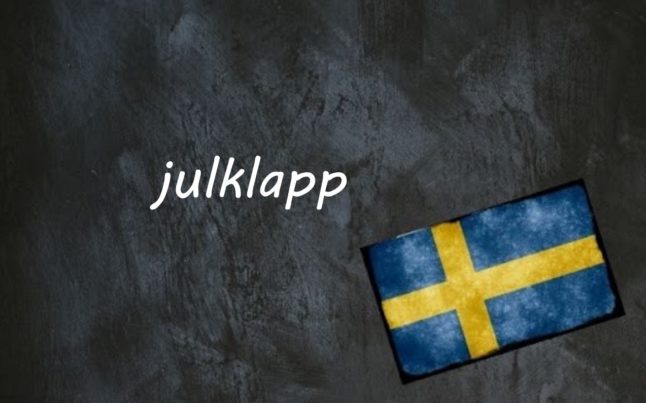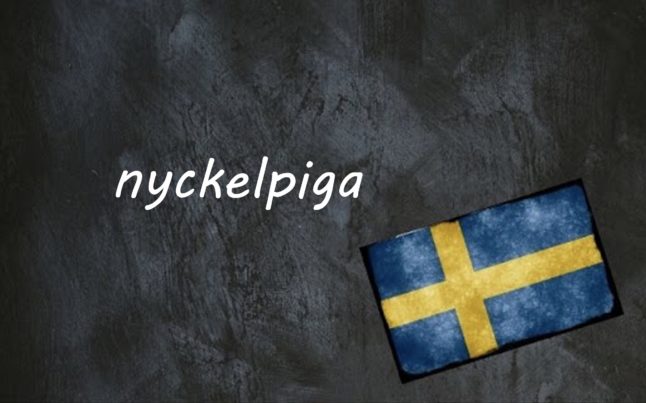If you want to say you received something “as a Christmas present”, you use the preposition i, for example: jag har fått en tröja i julklapp av min mamma (I got a jumper as a Christmas present from my mum).
At first glance, the word might be confusing, since the usual Swedish translation for the noun “present” is simply en present (the noun gift, as regular readers will know, means something totally different and altogether not very Christmassy).
So where does klapp come into it?
Without the prefix jul-, which means “Christmas” and whose history we’ve delved into before, en klapp means “a clap” or “a tap/pat” and is the noun form of the verb klappa (to pat or clap). One context you’ll often hear it in is the phrase en klapp på axeln (a pat on the back) which is used in the same sense as the English idiom.
If you were to travel back in time and experience Swedish Christmas several centuries ago, you wouldn’t find the locals shopping for chocolates or toys. Instead, Sweden had a tradition of gift-giving almost reminiscent of American Halloween “trick or treating”.
Swedes would knock on the doors of friends and neighbours before leaving behind a small token gift anonymously, perhaps a straw or wooden ornament, usually made by hand. Often these were accompanied by a small gift tag with a jokey riddle or poem that explained the meaning of the gift.
So the word julklapp referred to en klapp på dörren (a knock on the door), the tell-tale sign that the gift had arrived, and the noun was first recorded in the Swedish language in 1741. Before this time, it was generally only the upper classes who gave out holiday gifts, and those were usually exchanged at the New Year rather than on Christmas.
It wasn’t until the later 19th and 20th century that it became more common to buy Christmas gifts, rather than make small items, as Sweden underwent industrialisation and incomes rose. But though traditions may have changed, the word julklapp has survived in the Swedish language and remains a key part of the festive vocabulary to this day.
According to different traditions, in Sweden the presents might be given by the jultomte (a Swedish alternative to Santa Claus) or, er, the Christmas goat (read more on that here). In other families, the presents are simply left under the Christmas tree or exchanged between family members.
Every year, market researchers HUI unveil what they believe is going to be Sweden’s Christmas gift of the year – årets julklapp – with previous years boasting the woolly hat (2003), electronic pet (1997) and robot vacuum cleaner (2015). In 2023, the gift of the year is a board game. The prediction often becomes a self-fulfilling prophecy, with the gadget selected selling like crazy in the days running up to Christmas.
Example sentences:
Jultomten delade ut julklapparna.
Santa handed out the Christmas presents.
Jag fick den i julklapp.
I got it as a Christmas present.
Looking for a good idea for a julklapp?
Villa, Volvo, Vovve: The Local’s Word Guide to Swedish Life, written by The Local’s journalists, is available to order. Head to lysforlag.com/vvv to read more about it. It’s also possible to buy your copy from Amazon US, Amazon UK, Bokus or Adlibris.



 Please whitelist us to continue reading.
Please whitelist us to continue reading.
In Scots we have a verb “to clap” when we talk about patting or petting a dog or other animal.
You can also ‘klappa’ a dog in Swedish. Means to stroke.